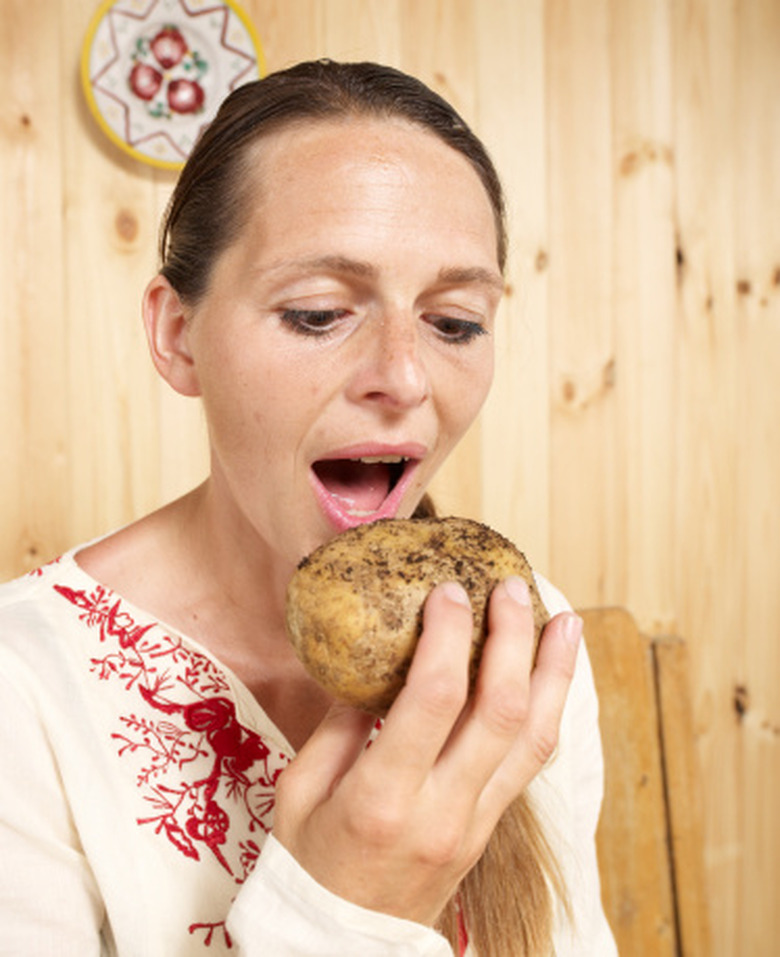How To Power A Lightbulb Using A Potato
More than just a tasty treat, potatoes can also be used in science experiments. Thanks to the sulfuric acid that they contain, they make an excellent electrolyte for use as a makeshift battery. With the addition of a copper strip and a zinc nail, you can actually create power through the battery and even light a small lightbulb or light emitting diode.
Step 1
Insert the copper strip or penny and the zinc nail into the top of the potato, putting one towards each of the potato's ends. The copper strip or penny will serve as the anode and the zinc nail is the battery's cathode. Make sure that the two terminals do not touch.
Step 2
Connect one wire each to the electrode and anode. If your wires do not have alligator clips on both ends, simply wrap the wire's bare end around the potato battery's terminals.
Step 3
Connect the loose alligator clip on the wire from the zinc cathode to the terminal on the base of the bulb or to the positive terminal on your LED. Connect the loose alligator clip from the copper anode's wire to the threads of the bulb or to the negative terminal on your LED.
Step 4
Dim the lights in the room, since the bulb or LED will be dim. If it does not light, reverse the order of the leads. If it still does not light, your potato battery may not generate enough power to light the bulb.
Step 5
Increase the power available by making another potato battery and connecting it in series with the first one. To do this, connect one potato's zinc nail to the other potato's copper terminal with a third wire. You can then connect the first potato's copper anode and the second potato's zinc cathode to your lightbulb or LED. If this is still not enough power, you can continue connecting potatoes in series.
Things Needed
- Large potato
- Zinc-coated nail
- Copper strip or penny
- Two wires with alligator clips
- Low voltage lightbulb or low-current LED
TL;DR (Too Long; Didn't Read)
If you do not have a penny from 1981 or before, use a copper strip. Pennies minted in 1982 or later contain almost no copper.
You can also try a lemon or orange.
Warning
Do not eat the potato after the project.
The "zinc nail" is actually zinc coated and will get used up over time.
Cite This Article
MLA
Poretsky, Solomon. "How To Power A Lightbulb Using A Potato" sciencing.com, https://www.sciencing.com/power-lightbulb-using-potato-8070677/. 24 April 2017.
APA
Poretsky, Solomon. (2017, April 24). How To Power A Lightbulb Using A Potato. sciencing.com. Retrieved from https://www.sciencing.com/power-lightbulb-using-potato-8070677/
Chicago
Poretsky, Solomon. How To Power A Lightbulb Using A Potato last modified August 30, 2022. https://www.sciencing.com/power-lightbulb-using-potato-8070677/
